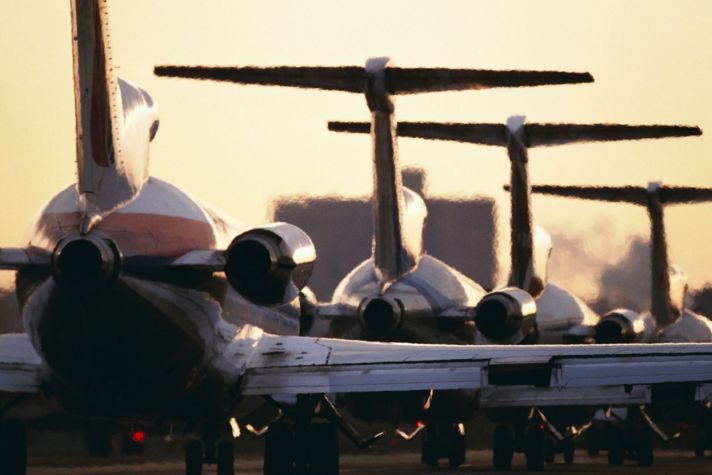-
 Global
Global-
Africa
-
Asia Pacific
-
Europe
-
Latin America
-
Middle East
-
North America
- |
- BUSINESSES
- |
- Contact
- |
-
 Global
Global-
Africa
-
Asia Pacific
-
Europe
-
Latin America
-
Middle East
-
North America
- |
- BUSINESSES
- |
- Contact
- |
You are browsing the product catalog for
- News
- Webb Space Telescope: Why The First Images Are Making History
Webb Space Telescope: Why The First Images Are Making History
NASA's Webb Space Telescope is helping to #UnfoldTheUniverse by capturing the deepest infrared images of space. See the first images and learn how Honeywell's engineers played a role.
Have you ever wished you could go back in time?
How about to a time 13.7 billion years ago, or just a few hundred million years after the Big Bang?
That’s about how far back into the universe’s history we’re now able to view, thanks to the observatory known as the Webb Space Telescope, which is the world’s largest and most powerful space telescope.
Nearly six months after being launched into space, the Webb telescope is situated about 1 million miles away from Earth, and its instruments have started capturing images.
The telescope is now open for scientific operations – in other words, taking images of the first objects that illuminated the universe (known as first light objects) after the Big Bang, observing how galaxies and stars have evolved, and studying if there are conditions favorable for life on other planetary systems.
NASA has released the Webb telescope’s first full-color images. Keep reading for highlights on what makes the images innovative and how Honeywell aerospace engineers played a role in one of Webb's two-part instruments.
What do Webb's first images mean?
Sources: NASA, ESA, CSA, and STScI
Among the Webb Space Telescope's first full-color images released by NASA was the image above, showing galaxy cluster SMACS 0723 as it appeared 4.6 billion years ago. It's the most detailed infrared image of the early universe to date, according to NASA.
Why it's innovative: Webb's image captures an area of the sky that is approximately the size of a grain of sand -- and it reveals some of the faintest objects ever observed.
Sources: NASA, ESA, CSA, and STScI
Another Webb image shows "Cosmic Cliffs," captured in infrared light, which is a star-forming region called NGC 3324 in the Carina Nebula, according to NASA.
Why it's innovative: The image reveals areas of star birth that were previously invisible, according to NASA.
Sources: NASA, ESA, CSA, and STScI
This Webb image -- the largest image from the telescope yet -- shows Stephan’s Quintet, a visual grouping of five galaxies.
Why it's innovative: Webb was able to show previously unseen details in the galaxy group because of the telescope's resolution and infrared vision, according to NASA.
A closer look at Webb
An international program led by NASA with its partners the European Space Agency and the Canadian Space Agency, Webb is considered the scientific successor, and is complementary, to the Hubble Space Telescope. The two have different capabilities, and Webb can see deeper into space than Hubble, according to NASA.
The four instruments on Webb each play an important role in allowing it to capture images that are expected to help scientists observe deep into the universe’s past.
Source: Ball Aerospace via NASA
Honeywell’s aerospace engineers built and tested a “two for one” instrument that the Canadian Space Agency contributed to Webb. The first part is the Fine Guidance Sensor (FGS), which helps guide the telescope and point it precisely so it can focus on an object of interest. The FGS is the most sophisticated guidance sensor of any telescope, and it remains active during all of Webb’s observations.
The second part is the Near Infrared Imager and Slitless Spectrograph (NIRISS), which is designed to help scientists observe distant galaxies, as well as study the chemical composition of exoplanets’ atmospheres to possibly search for conditions that may be favorable for life.
Neil Rowlands, engineering fellow and project scientist in our aerospace business, has been a part of the Canadian Space Agency’s contributions to the telescope since the idea of a next-generation telescope was just a concept.
“With Webb, we can see deeper into the universe than Hubble did, which means we'll look back further in time. When stars and galaxies released this ‘first light’ that Webb and its instruments will now see, they were only a few hundred million years old, much closer to the Big Bang, and closer to their formation environment. Scientists will now try to link what they see in the early universe with Webb to the universe we see today, revealing a fuller picture of the universe’s evolution,” Rowlands said.
Copyright © 2024 Honeywell International Inc.




